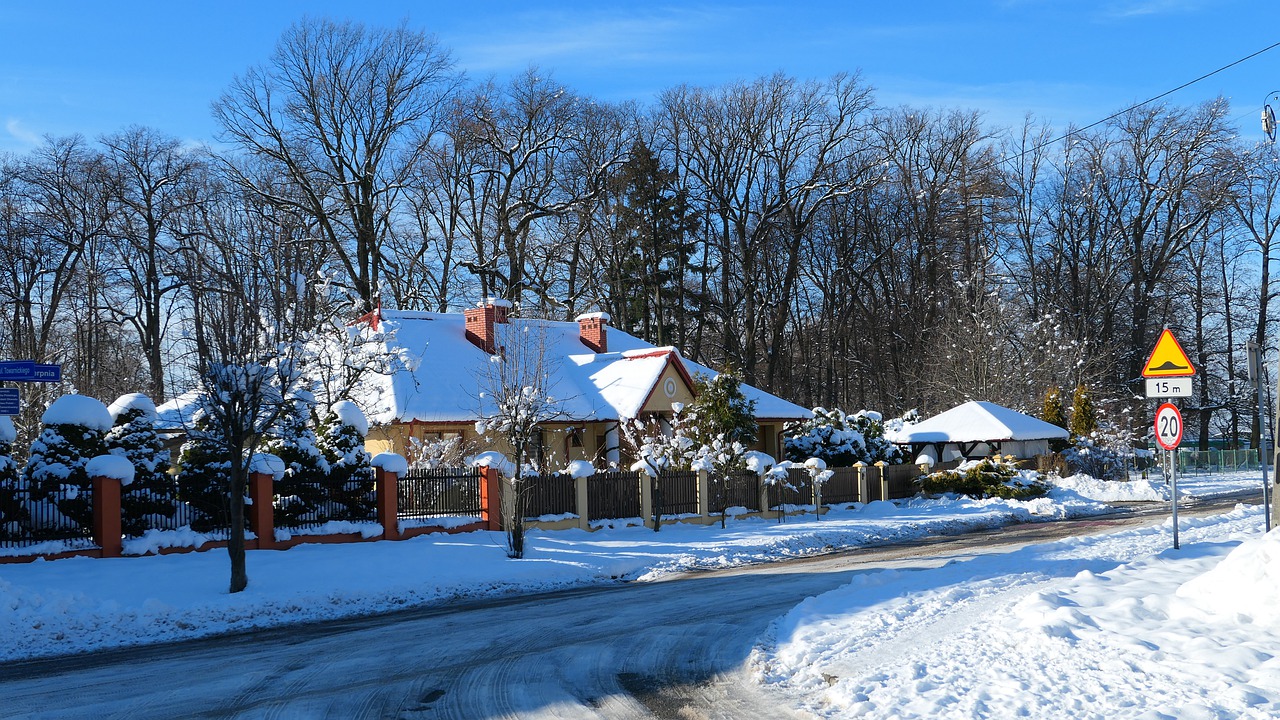Our winterizing your house checklist can help you keep your home safe and comfortable throughout the chilly winter months. Winterizing your house might not be at the top of your priorities list right now. If you don’t take the time to prepare your home before the winter chill comes in, cold weather, ice, and snow may all do severe damage.
This checklist will assist you in properly winterizing your home – and make it a lot more enjoyable when the weather cools.
Ceiling fan blades in reverse
If you have ceiling fans in your house, you should rotate the blades according to the seasons for optimum benefits. In the summer, the blades of most ceiling fans should rotate counterclockwise, forcing cool air down. Switching the blades to clockwise rotation on the lowest setting in the winter will help keep you warm by pushing warm air down from the ceiling.
Bright colours should be used.
Days in the winter might be drab and gloomy. Bright draperies and furniture will help to lift your spirits. You might pick brightly coloured furniture with geometric patterns or other entertaining themes. Warm rugs and carpets in a variety of colours may also be used to decorate your house and make the rooms cozier.
Prepare for winter storms.
Pay attention to the weather forecast so you can prepare in advance if a winter storm is on the way. Keep your home and car emergency kits on hand at all times, and make sure your car is up to date on maintenance and has a full tank of petrol in case you need to leave.
If you don’t already own a portable generator, now is a good time to get one. Generators can keep your house warm until the power provider is able to restore electricity.
Insulate Windows
If your windows have any air leaks, they may drive up your energy cost — and detract from the comfortable atmosphere you desire inside your house when it’s chilly outside. Reduced draughts, on the other hand, can save your home’s energy expenditures by up to 20% each year. Here are five simple techniques for rapidly insulating your windows:
1. Weatherstripping with a V-seal. Along the edges of the sashes, add this plastic weather stripping. With the V-seal in place, windows may open and close evenly. (As an added bonus, weather stripping works wonders on doors.)
2. Caulk for ropes. This sticky, soft caulk may be molded to fit the gap, and it comes off easily at the conclusion of the cold season.
3. Film that shrinks. When heated with a hairdryer, this translucent plastic sheeting shrinks drum-tight when applied with double-sided tape. The coating keeps draughts at bay and traps an insulating layer of air. In the spring, use rubbing alcohol to assist loosen the tape and prevent peeling any paint.
4. Nail polish, to be precise. Clear polish, when applied gently, covers the fissure nearly completely. It will stabilize the glass until you can replace it in the spring once it has hardened.
5. Snake in the drought. If chilly air is leaking in through the bottom of your window, invest in a foam-and-fabric draught snake kit.
Gutters and downspouts should be cleaned out.
Clogged rain gutters or downspouts can cause foundation damage or ice dams, both of which can be costly to fix. Check for drooping gutters that retain water, tighten gutter hangers and downspout brackets, and replace any old or damaged components.
Cover all unprotected surfaces.
Although laminate, wood, and tile flooring are attractive, they can cause heat loss in the cold. Consider placing rugs or laying carpet over your bare floors as part of your winter home maintenance checklist to keep your feet comfortable and reduce heat loss.
Allow the radiators to cool.
If you have radiator heating in your house, clearing the area surrounding your radiator can prevent bulky furniture from collecting the heat intended for your family. You may also reduce heat loss via an outside wall by placing aluminum foil behind the radiator and reflecting the heat back into the room.
A floating shelf strategically positioned above the radiator can help prevent hot air from rising too quickly to the ceiling. Just make sure nothing is placed directly on the radiator.
If your heating system isn’t up to the task, try purchasing a space heater; just make sure you use it carefully to avoid a fire.
Low-hanging branches should be looked after.
Trees that surround your property can cause significant damage and even power outages. After a storm, the weight of the snow might shatter branches or bring the entire tree down on your house or electrical lines. Before the snow falls, have the tree’s health evaluated and any dead or dangerous limbs removed.
Using the winter home maintenance checklist to prepare your home for winter may keep you warm, minimize cold-weather damage, and save your energy expenses. Even if it’s hot indoors, you may still enjoy the lovely, crisp outdoors by following these guidelines for exercising outside in the cold. When you’re done, warm up close to your fire pit before heading inside.


